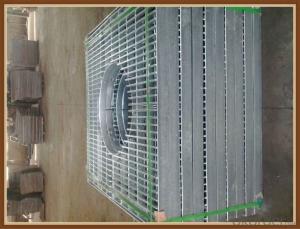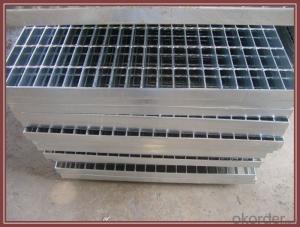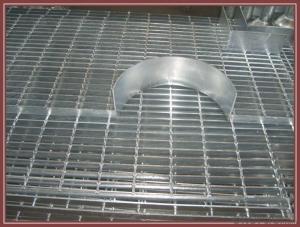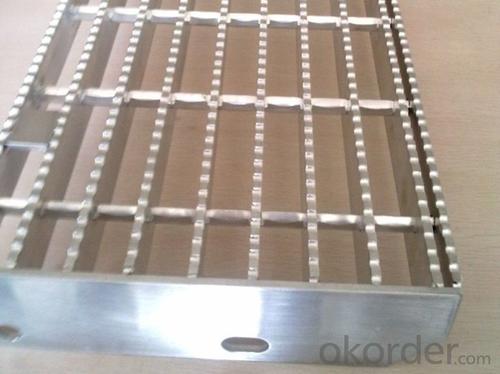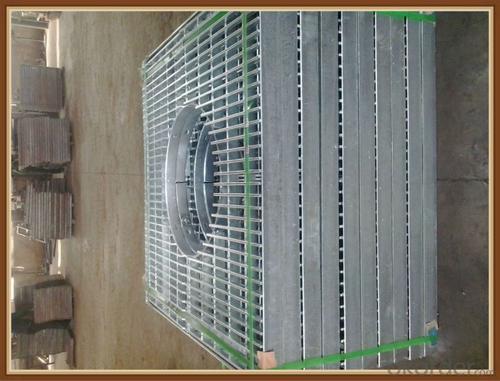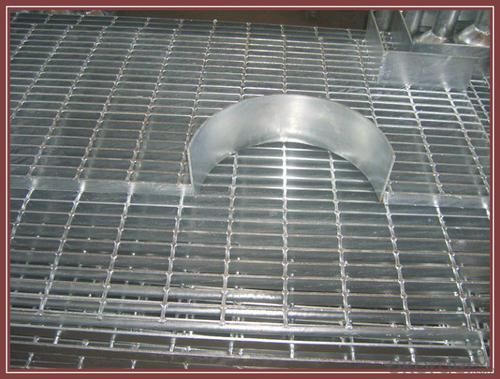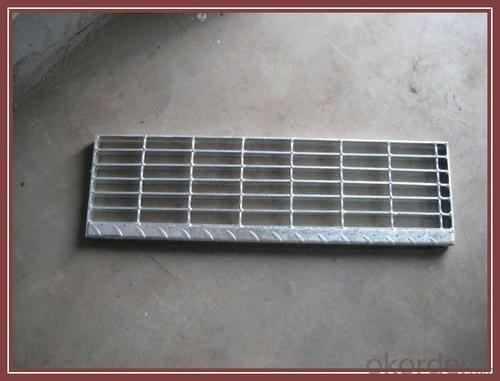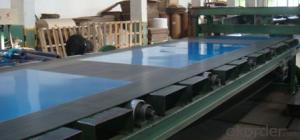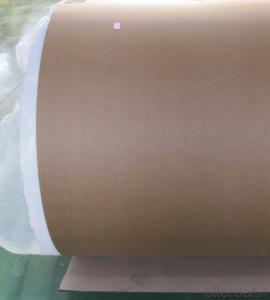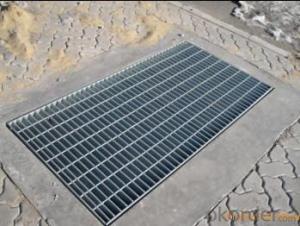Lightweight Aluminum Alloy Road Grating, Grate Drainage Trench Cover & Manhole Cover
- Loading Port:
- Qingdao
- Payment Terms:
- TT OR LC
- Min Order Qty:
- 5000 pc
- Supply Capability:
- 6000000 pc/month
OKorder Service Pledge
OKorder Financial Service
You Might Also Like
1.Description of Drainage trench cover:
Drainage trench cover is widely used in the urban road, the square, the botanical garden, the wharf, the airport, the parking lot, the road, each kind of industry, the civil project, etc.
2.Main features of Drainage trench cover:
I--Carrying 20 tons of weight
II—Carrying 14 tons of weight
III---carrying 6 tons of weight
IV---carrying 2 tons of weight
V---Carrying pedestrian weight
3.Glass Wool Blanket Images:
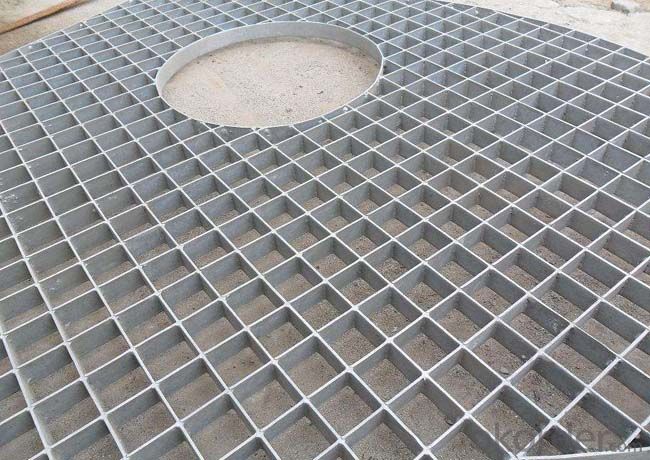
4. Drainage Trench Cover Technical Parameters:
These drain cover plate applies to the road cross-sectional and longitudinal drain. The drains width ranging from 200mm to 550mm.
A means the steel grating length
H means the steel grating height
A means the frame length
H means the frame height
5.FAQ
We have organized several common questions for our clients,may help you sincerely:
①How about your company?
A world class manufacturer & supplier of Drainage trench cover is
one of the large scale professional investment casting production bases in China,consisting of both casting foundry forging and machining factory. Annually more than 8000 tons Precision casting and forging parts are exported to markets in Europe,America and Japan. OEM casting and forging service available according to customer’s requirement.
②How to guarantee the quality of the products?
We have established the international advanced quality management system every link from raw material to final product we have strict quality test; We resolutely put an end to unqualified products flowing into the market. At the same time, we will provide necessary follow-up service assurance.
- Q: why could aluminum pot be repaired by knocking the aluminum sheet into the pot but not being bonded by glue?
- the oxidation rate of aluminum's surface is very quick, so we cann't use the method of tin welding, and the cost of argon arc welding is very high,so aluminum pot's repair usually uses riveting. aluminum has low hardness and good ductility, so it can be repaired by tightly knocking, without the bonding of glue. general glue will decomposed in open fire, if we bond pot by glue, the pot after repair won't be able to endure high temperature.
- Q: What are the different methods of surface coloring aluminum sheets?
- Aluminum sheets can be colored using various methods, each with its own strengths and limitations. Let's explore some of the commonly used techniques: 1. Anodizing: Anodizing is a favored method for coloring aluminum sheets. It entails creating a controlled oxide layer on the surface of the aluminum through an electrochemical process. This layer can be dyed in different colors, resulting in a resilient and long-lasting finish. Anodized aluminum is resistant to corrosion, UV rays, and scratches, making it an excellent choice for outdoor applications. 2. Powder coating: Powder coating is another popular technique for coloring aluminum sheets. It involves applying a dry powder coating to the sheet's surface, which is then cured in an oven. The powder melts and forms a protective layer that adheres to the aluminum. Powder coating offers a wide range of colors and finishes, and it provides exceptional durability, fade resistance, and scratch protection. 3. Painting: Painting is a traditional method for coloring aluminum sheets. It requires applying a liquid paint to the surface, which subsequently dries and forms a protective layer. Painting offers a vast array of color options and can achieve various finishes, such as matte, gloss, or metallic. However, painted aluminum sheets may require additional protective coatings to enhance durability and fade resistance. 4. Cladding: Cladding is a technique that involves applying a thin layer of colored material, such as stainless steel, copper, or composite panels, onto the aluminum sheet's surface. This method allows for a wide range of colors and finishes, while also providing extra protection. Cladding can be utilized to achieve a unique aesthetic or enhance the durability of the aluminum sheet. 5. Dye sublimation: Dye sublimation is a specialized method of coloring aluminum sheets, which employs heat and pressure to transfer designs or images onto the surface. This process enables high-resolution prints and vibrant colors, making it particularly suitable for decorative and signage applications. Each method of coloring aluminum sheets has its own advantages and considerations, such as durability, aesthetics, cost, and application requirements. It is crucial to thoroughly assess these factors when determining the most suitable method for a specific project.
- Q: What is the typical modulus of elasticity of aluminum sheets?
- The typical modulus of elasticity of aluminum sheets is around 70 GPa (Gigapascals).
- Q: Can aluminum sheets be used for heat shields in appliances?
- Yes, aluminum sheets can be used as heat shields in appliances. Aluminum is a good conductor of heat, making it an effective material for dissipating and reflecting heat away from sensitive components in appliances. Additionally, aluminum is lightweight, durable, and has good corrosion resistance, making it a suitable choice for heat shield applications in various appliances.
- Q: Can 101 aluminum sheets be anodized?
- Yes, 101 aluminum sheets can be anodized. Anodizing is a process that creates a protective oxide layer on the surface of aluminum, enhancing its corrosion resistance and durability. It can be applied to various grades of aluminum, including 101, to achieve desired finishes and provide additional protection. Anodizing can be done through various methods, such as chromic acid anodizing, sulfuric acid anodizing, or hardcoat anodizing, depending on the specific requirements and desired results. Therefore, 101 aluminum sheets can certainly undergo anodizing processes.
- Q: which has more volume? a kg of gold or a kg of aluminum? please explain in physics terms
- Aluminum. Since it's less dense than gold, you need more aluminum to get a kg. Density = mass/volume. Density of gold density of aluminum
- Q: This question asks for a comparison of aluminum sheets with other materials regarding their cost and performance.
- <p>Aluminum sheets are generally cost-effective and offer excellent performance compared to many other materials. They are lightweight, which reduces material and transportation costs. They also have high strength-to-weight ratios, making them durable and resistant to corrosion. In terms of performance, aluminum sheets are versatile, used in various industries such as construction, automotive, and aerospace. They conduct heat and electricity well, which is beneficial for applications requiring thermal or electrical conductivity. However, they may be more expensive than some plastics or cheaper metals like steel on a per-unit basis, but their lower weight and durability often offset this cost over time.</p>
- Q: How does 1200X1200X15 6061 aluminum, CNC processing, the plane degree can reach the number of my clients to 0.2, but I used to use the MS 1000X1500X70 to the material processing, the flatness is only 1, please experienced friend to help, thank you
- The first rough machining, no precision position of the first place, finishing allowance for heat treatment of unilateral 0.15MM, and then remove the stress of 420 degrees Celsius for 4 hours, with the furnace cooling (very important), doing fine processing, can guarantee within 0.03
- Q: This question asks for a comparison of the positive and negative aspects of utilizing aluminum sheets in building construction.
- <p>Aluminum sheets in construction offer several advantages, including lightweight properties that reduce structural load, excellent corrosion resistance, and durability which minimizes maintenance needs. They are also energy-efficient, reflecting heat and reducing cooling costs. Additionally, aluminum is recyclable, contributing to sustainability. Disadvantages include higher initial costs compared to some traditional materials and potential for dents or damage from impacts. Aluminum can also be noisy when walked on, and it may require additional insulation for thermal performance, adding to the overall cost.</p>
- Q: why does aluminum sheet not react with sulfuric acid nut react with hydrochloric acid?
- aluminum reacts with hydrochloric acid,generating aluminium chloride which can dissolve in water. but aluminum reacts with sulfuric acid, generating aluminum sulfate which can't dissolve in water and will generate aluminum sulfate, a layer of protective film, preventing aluminum from reacting with sulfuric acid, so there is no significant phenomena.
Send your message to us
Lightweight Aluminum Alloy Road Grating, Grate Drainage Trench Cover & Manhole Cover
- Loading Port:
- Qingdao
- Payment Terms:
- TT OR LC
- Min Order Qty:
- 5000 pc
- Supply Capability:
- 6000000 pc/month
OKorder Service Pledge
OKorder Financial Service
Similar products
Hot products
Hot Searches
Related keywords

